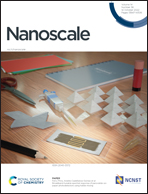Manipulating the crack path through the surface functional groups of MXenes†
Abstract
As newly developed 2D materials, due to their advanced physical/chemical properties and potential applications in energy storage, electromagnetic interference shielding, electronics and photon-detectors, MXenes have attracted extensive attention in recent years. MXenes are synthesized by selectively etching the A element from MAX phases using hydrochloric acid and lithium fluoride, so hardly any pure structures of MXenes (e.g. Ti2C, T3C2) exist. Usually, the surfaces of MXenes are terminated by –OH, –F, –O or other surface terminations. However, fundamental knowledge of the mechanical properties of MXenes, especially the effect of different functional groups, is limited due to the difficulty in mechanical testing. In this work, we studied the mechanical properties of a series of MXenes with emphasis on the effect of the functional groups. We took the most common MXene Tin+1CnO2 and Tin+1Cn(OH)2 as examples using molecular dynamics simulation. We evaluated the moduli of various MXenes and the influence of the functional groups. Besides, we studied the fracture behavior of MXenes with different functional groups. Based on our simulations, we found that the functional group did affect the mechanical and fracture properties. And we also proposed a possible approach to controlling the crack propagation path which would benefit the further design of nanodevices and nanocomposites.



 Please wait while we load your content...
Please wait while we load your content...